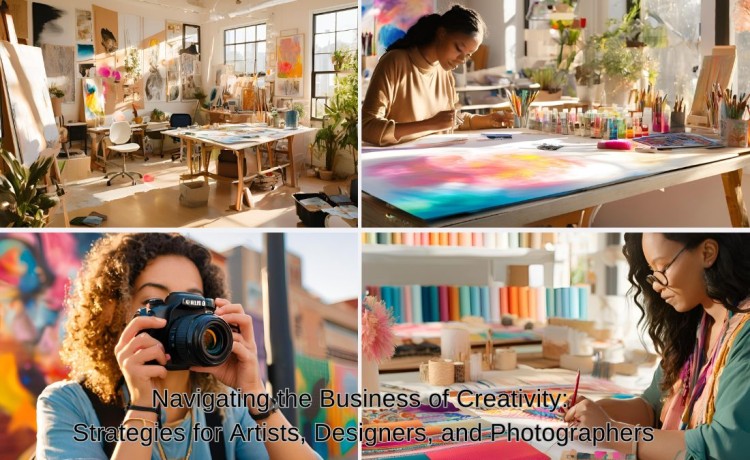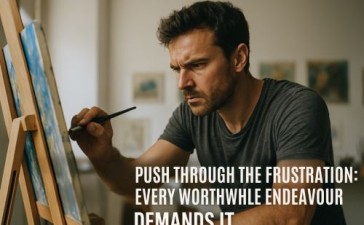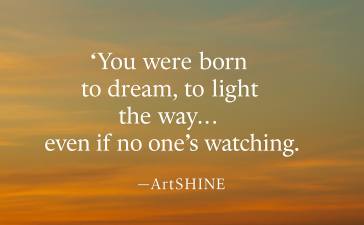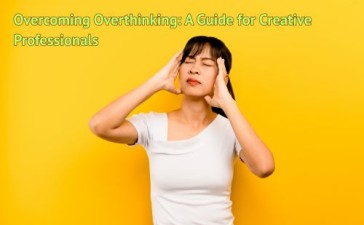In today’s dynamic creative landscape, professionals such as artists, surface designers, photographers, and graphic designers are increasingly embracing entrepreneurship to transform their passions into profitable ventures. While artistic talent forms the foundation, the fusion of creativity with strategic business acumen is essential for sustained success. This article delves into key strategies that can empower creative professionals to navigate the complexities of the business world effectively.
1. Identifying and Cultivating Your Niche
Establishing a distinct niche is paramount in differentiating oneself in a saturated market. By focusing on a specific style, medium, or subject matter, artists can attract a dedicated audience seeking unique offerings. This specialization not only enhances marketability but also fosters a strong personal brand. As highlighted by The Art Career Project, “There is no such thing as an industry monopoly… you will find a much more passionate customer base if you specialize in one type of art and become known for your ability to create that one type of art.”
2. Mastering Business Fundamentals
A profound understanding of business principles is crucial for translating creative endeavours into financial success. This encompasses accurate pricing strategies, financial management, and the development of a sustainable revenue model. Engaging in educational opportunities, such as business courses or workshops tailored for creatives, can equip artists with the necessary skills to manage their enterprises effectively. The Art Career Project emphasizes, “It is crucial that aspiring art business owners find a way to stand out and stay financially solvent.”
3. Building a Robust Professional Network
Networking serves as a cornerstone for growth and opportunities within the creative sectors. Cultivating relationships with fellow artists, industry professionals, and potential clients can lead to collaborations, referrals, and valuable insights. Active participation in industry events, workshops, and online communities fosters a supportive network that can be instrumental in navigating challenges and seizing new opportunities. As noted by The Art Career Project, “Networking is important in any industry… but it is especially crucial for artists looking to start their own businesses.”
4. Developing a Strong Personal Brand
A compelling personal brand distinguishes artists in a crowded marketplace. This involves articulating a unique value proposition, maintaining a consistent visual identity across platforms, and crafting an authentic narrative that resonates with the target audience. As advised by RoyerComm, “Define your brand identity… Create a consistent visual style: Your logo, website, and social media profiles should all tell a cohesive visual story about who you are as a designer.”
5. Leveraging Digital Platforms for Marketing
In the digital age, an effective online presence is indispensable. Utilizing social media, personal websites, and online portfolios allows artists to showcase their work to a global audience. Regularly updating these platforms with high-quality content, engaging with followers, and utilizing search engine optimization (SEO) techniques can significantly enhance visibility and attract potential clients. As highlighted by The Part-Time Artist, “Social media especially is becoming a conduit through which artists can sell more art and make themselves known outside of their local area.”
6. Exploring Diverse Revenue Streams
Diversification of income sources can provide financial stability and open new avenues for creative expression. Beyond traditional sales and commissions, artists can consider avenues such as licensing their designs, offering workshops, or engaging in freelance projects. For instance, surface designers might explore freelance opportunities to supplement their income and expand their professional portfolio. As discussed by Sketch Design Repeat, “Freelance design jobs are an effective stream of income for surface designers and can help increase your income.”
7. Continuous Skill Development
The creative industry is ever-evolving, necessitating a commitment to lifelong learning. Staying abreast of industry trends, mastering new tools and technologies, and refining artistic techniques are vital for maintaining relevance and competitiveness. Engaging in professional development not only enhances the quality of work but also expands the range of services an artist can offer.
8. Effective Time and Project Management
Balancing creative pursuits with business responsibilities requires adept time management. Implementing structured schedules, setting clear goals, and utilizing project management tools can aid in maintaining productivity and meeting client expectations. Efficient management ensures that administrative tasks do not overshadow creative processes.
9. Embracing Authentic Marketing Strategies
Authenticity in marketing fosters genuine connections with the audience. Sharing personal stories, behind-the-scenes glimpses, and the creative journey can humanize the brand and build trust. As emphasized by The Part-Time Artist, “Marketing sometimes feels… icky. It can make you feel like a conman trying to scam people… it doesn’t have to be this difficult, or feel insincere!”
10. Seeking Feedback and Adapting
Constructive feedback is invaluable for growth. Engaging with peers, mentors, and clients to solicit input can provide diverse perspectives and highlight areas for improvement. Being open to critique and willing to adapt fosters continuous development and aligns offerings with market demands.
In conclusion, the intersection of artistry and entrepreneurship presents both challenges and opportunities. By integrating creative passion with strategic business practices, artists, surface designers, photographers, and graphic designers can build sustainable and fulfilling careers. Embracing a proactive approach to business development, marketing, and professional growth is essential in navigating the evolving landscape of the creative industry.
💥 Want to learn more?
Find out more:
👉 Launch Pad + Accelerator Expressions of Interest
👉 Selling and Licensing Your Art & Designs Around the World with ArtSHINE
We’re here to help you take action—just like we’ve helped thousands of entrepreneurs, business owners, and creative professionals around the globe.
✨ Want regular inspiration, mindset tips, and art licensing opportunities sent straight to your inbox?
Sign up for the ArtSHINE Weekly Newsletter and stay connected to a creative community that’s growing, thriving, and shining together.
Now is the time to let your passion SHINE.
Now is the time to Make Tomorrow Today!
To your success,
Vinh Van Lam & Stuart Horrex
Cofounders, ArtSHINE.com





